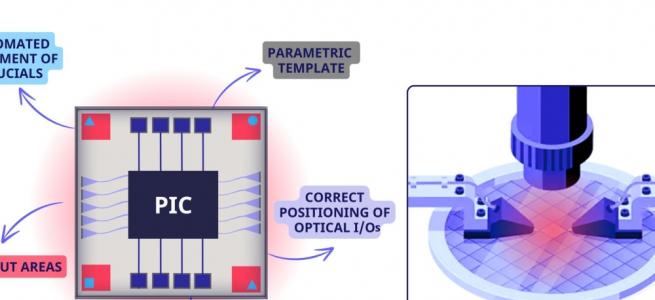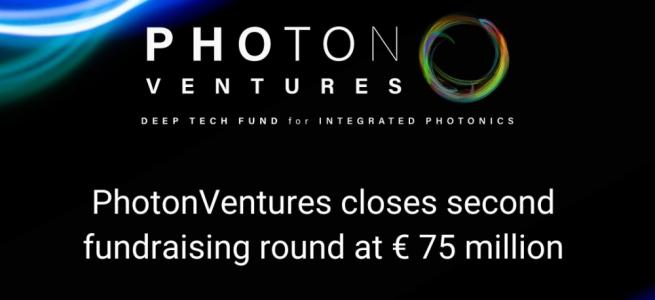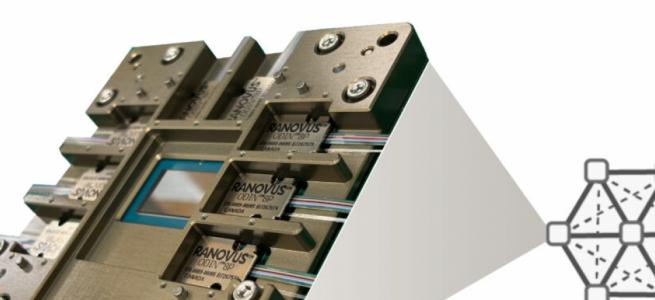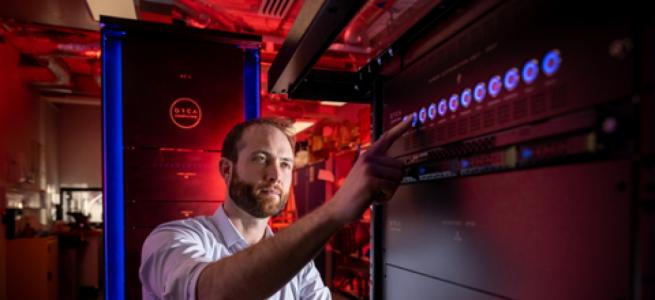UK University spin-out to make novel light-based silicon chips

Chromosol gets funding to commercialise erbium-based technology to build lasers on silicon photonic devices
Chromosol, a Queen Mary University of London (QMUL) spin-out, has received investment to commercialise a new material technology which could drastically cut energy use and increase the speed of optical communications.
IP Group, a developer of intellectual property-based businesses, will work closely with QMUL throughout the development with the provision of commercial expertise.
Chromosol's technology involves trapping lanthanide ions (such as erbium) inside specially designed organic molecule 'cages'. The plan is use the materials as a distributed gain media to build lasers on silicon photonic devices.
"It is easy to integrate and compatible with the existing processing techniques, providing a simple solution to a growing problem", said company founder William Gillin, Director of the Materials Research Institute at QMUL.
"The molecules are almost the ultimate quantum dot", he told PIC Magazine. "QDs are normally defined by the fact that semiconductors have energy bands and these can be confined by reducing their size to produce quantum confinement. The ultimate QD is an atom and we are essentially using the properties of the erbium atom but we are shielding it by putting it in an inert molecular cage."
In more traditional materials such as glasses there is a limit to the concentration of erbium that can be used. When this is combined with the very low absorption coefficient of erbium, it means that another laser is required to excite the erbium atoms so that they emit coherent light.
But by trapping the erbium inside a specially-designed molecule, it is possible to achieve high concentrations of the ions and very fine control of the distance between them, says Gillin. "This can allow you to control concentration quenching to some extent. We can then mix these erbium containing molecules with specially designed chromophores which effectively increase the absorption of the erbium atoms"
Organic molecules have the advantage of high absorption coefficients ~106 times greater than the erbium ions. "It means you get very efficient energy transfer from the organic part into the erbium", explains Gillin.
Chromosol's chromophore molecules are similar to those used in dye-sensitised solar cells or OLEDs. One major difference is that the chromophore molecules contain no hydrogen. By using fully halogenated materials [where all of the hydrogen is replaced with fluorine or chlorine], any vibrational OH or CH modes which might couple with the erbium are removed. This eliminates the quenching and gives high quantum efficiencies.
"When we couple this with the very high sensitisation afforded by using organic chromophores we can obtain population inversion in the erbium at very low power densities compared to other approaches. For example we can get population inversion at a power density of much less than 1 W/cm2", explains Gillin.
"Due to the infinite chemistry available it is possible to engineer the molecules to absorb or emit at different wavelengths and to tune the various physical properties to optimise performance for a particular application."
Data centre energy use
The technology could have a big impact on the energy use of data centres "“ large groups of networked computer servers typically used by organisations like Google and Facebook for remote storage and processing huge amounts of data.
Traditional copper cables, used for transferring data electrically, are stifling both data centre evolution and high-performance computing due to their slow transfer capacity and high energy consumption "“ the latter which results in the need for vast amounts of cooling.
It is estimated data centres now use around three per cent of the world's generated electricity and produce about two per cent of greenhouse gas emissions.
Gillin said: "Large amounts of energy are needed to move data electrically over relatively short distances. If we can remove the need for this electrical data transfer then the power requirements of data centres will be reduced dramatically."

































